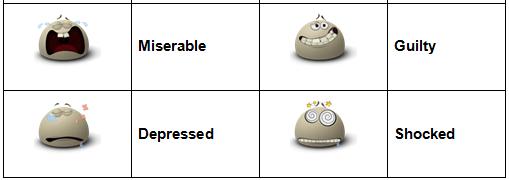Lesson Plan
Painting analysis
Joseph Stella Brooklyn Bridge
Skills covered:
Visual interpretation
Analysis
Logical reasoning
Critical thinking.
General goal:
To develop students’ critical thinking through analyzing Joseph Stella’s painting ‘Brooklyn Bridge’ and the expressive means used by the author.
Specific objectives:
- Vocabulary extension for a topic “Feelings”
- Analyzing connection between color and moods
- Analyzing the other expressive means in a painting:
line, symmetry, balance.
- Analyzing additional information.
- Interpretation of the painting.
Language development:
- Vocabulary extension
- Listening for gist
- Reading for details
- Argumentative writing (expressing opinion)
Materials / Visual aids:
- The picture by J. Stella Brooklyn Bridge (printed or demonstrated though a projector)
- J. Stella’s quotation
- Text for listening ( symmetry and balance)
- Text for reading.
- Handouts for lesson activities
- List of adjectives
- “Feelings stairs”
- Listening task
- Text for reading
- Assessment coloring pictures
Instructional Procedures:
Activity |
Type of work |
Time (minutes) |
Warm-up activity ‘How are you feeling today?’( the word ‘fine is forbidden) |
Chain-work |
3 |
Lead-in activity ‘Different feelings’ (app. a Feelings) |
Individual work |
4 |
Moods-and colors activity ( app b) |
Group-work |
7 |
Guess what is the mood activity |
Teacher-students |
5 |
Tell what you see |
Teacher-students |
5 |
Quotation discussion ( quotation on the blackboard) app c |
individual |
6 |
Listening for gist ( handouts app d) |
Teacher-students |
4 |
Reading ( handouts app e) |
Group-work |
7 |
Now I know assessment ( handouts app f) |
individual |
2 |
Lesson assessment coloring ( handout app g) |
Group-work |
5 |
Extra-class work- write an essay “ My impressions of a J. Stella painting the Brooklyn Bridge |
|
2 |
Total- 10 activities |
|
50 |
Warm-up activity
After greeting the teacher asks students how they are feeling today, adding that the word ‘Fine” is forbidden for today. The tempo of activity must be very high. After 5-7 answers there will be a loss of tempo because of lack of words. The teacher offers assistance spreading handouts ‘Feelings’ and giving students time to get acquainted with them (1-2 min)
After that the teacher asks again ‘How are you feeling today’ and elicits various answers.
The teacher explains that now students work in groups ( 3 groups are organized)
- The group makes a list of positive feelings ( the more the better)
- The group makes a list of negative feelings ( as many as possible)
- The group makes a list of feelings somewhere in between positive and negative.
After 2 minutes work the results are presented to the class and discussed
Moods and colors activity
The teacher explains that this is a group-work ( 3 groups are organized) . Each group gets a handout with empty stairs. The task is to put 6 adjectives of those they found before on stairs from the lowest mood to the highest.
After 2 minutes work the results are presented and discussed . Groups get the next task- to color each step in an appropriate color.
After 2-3 minutes work groups present their results and discuss them.
After the discussion the teacher asks students – Can you guess the mood of the painting if you don’t know the plot?
Guess what activity
The picture by J. Stella is hanging on the blackboard but it is covered with a paper 1/3 of it and can be removed easily ( it can be the ;left-hand side or the right hand side on your choice).
The students give their answers about the mood of the painting judging from and giving arguments. The teacher elicits various answers. If necessary the teacher can prepare a handout with anticipated adjectives beforehand.
Anticipated adjectives.
‘Blue moods”, tense, thrilled, disquiet, tragic, frustrating, scary, lonely, terrified, shocked, breathless, spirited, vibrant, sensuous, overwhelmed, impressed, moved, depressed, touched, struck, inspired, enraptured.
After a discussion about the general mood the whole picture is opened and named.
Tell what you see activity
Here is the picture of an American painter Joseph Stella The Brooklyn Bridge
.
What do you see?
Is it a day or a night?
What are the colors of the picture?
What are your feelings when you look t the picture?
What were the author’s feelings when he was on the bridge?
What expressive means does the author use in the picture?
Listening
Students are given handouts with questions for listening ( appendix d)
After listening the answers are discussed and the symmetry in the picture is discussed.
Stella’s quotation discussion
The quotation is read aloud.
How do you understand these words? ( Elicit argumentative answers)
I think some additional information can help you understand his thoughts deeper.
Reading for details
Students are given handouts with a text and questions and after reading ( 1 min.) their answers and ideas are discussed.
Extra-class assignment
As the result of our very tense and fruitful discussion today I ask you to write an essay at home named ‘My own impressions of the painting The Brooklyn Bridge” by Stella about 100-120 words.
Lesson assessment
Now it is time for lesson assessment. Let’s make it in groups. Groups are to fill in an opinion list about lesson activities and express their emotions in coloring butterflies for us to make a lesson assessment picture. The work can be divided among group members to have faster results.
After the lesson butterflies and opinion lists are glued to a big paper on the wall and we can enjoy a very creative poster .


Appendix d
The Brooklyn Bridge
Composition & balance
Symmetry is an element that is often used in paintings though it is not always obvious at first glance.
Symmetry refers to the correspondence of in size, shape and relative position of elements within the picture plane. There elements are found on opposite sides of a dividing line or median point usually but not always located at the central avis of the painting.
Symmetry balance implies symmetry that appears as a mirror image. Symmetry balanced painting will have their focal point at the centre or the composition with equal visual weight on either side of the centre focal point.
Triangle is often chosen as the overall shape of a painting’s composition because it lends a sense of stability and balance.
Often important components that work together to create a sense of balance in a work of at include color ( keeping all the tones and saturation of a painting’s color within a certain range) and proportion (keeping the relative size of objects and figures within the range of what we normally see).
http://edsitement.neh.gov/view_lesson_plan.asp?id=642
Listening task
Choose a right answer. More than ne variant is possible.
- 1.Symmetry is an element often used in
- Paintings
- Engineering
- Sculpture
2. Symmetry is correspondence in
- Size
- Color
- Shape
- Position of people
- Position of elements
3. Symmetrical elements are found on
- One side of a painting
- In the centre
- On the opposite sides of the painting
4. Symmetrical balance is
- A beautiful image
- A calculated image
- A mirror image
5. The focal point of the picture is situated
- At the top
- At the bottom
- In the centre
6. The overall shape is often
- A circle
- A square
- A triangle
Appendix e
The Brooklyn Bridge
Reading
Futurism influence
Italian futurists did not see the world in a classical or realistic manner but more in caleidoscopic or chaotic rushes.
The multimedia Futurists were intent on incorporating the concept of the machine into their work particularly the automobile and the visual effects it produced through speed. The Futursts impressed upon Stella the idea that artists should no longer be influenced by past subjects or styles but that only the present and tings to come truly mattered
www. 20-th centuryart.suite101.com.
www.sullivangoss.com
Questions
1.How did the Italian Futurists see the world?
2.How did the futurists express the concept of the machine in their work?
3. What idea did Futurists impress upon Stella?
Appendix f
The Brooklyn Bridge
Now I know
- How to express my feelings more exactly
|
|
- How to express feelings in a painting
|
|
- What helps to express feelings in a painting
|
|
- What is futurism
|
|
- Why was Stella`s painting the Brooklyn Bridge so special.
|
|
|

